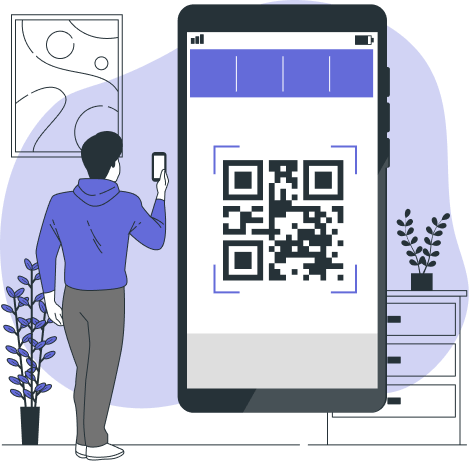Introduction
In the digital age, where convenience and efficiency are paramount, the restaurant industry is evolving rapidly to meet consumer demands. One of the most significant innovations in recent years is the use of Quick Response (QR) codes. These scannable codes allow customers to access menus, promotions, and information without needing physical copies. Custom QR codes for restaurant menus not only enhance the dining experience but also provide numerous benefits for restaurant owners. This article explores the importance of custom QR codes, their advantages, and a step-by-step guide on how to generate them for your restaurant menu.
The Importance of QR Codes in the Restaurant Industry
1. Enhanced Customer Experience
In a world where speed and efficiency matter, customers appreciate the convenience of digital menus. By scanning a QR code with their smartphones, diners can access the full menu, view images of dishes, and even check out special promotions. This eliminates the need for physical menus, reducing the risk of cross-contamination—especially crucial in the wake of the COVID-19 pandemic.
2. Cost-Effectiveness
Printing physical menus can be expensive, especially when considering the costs associated with design, printing, and reprinting due to menu changes. By utilizing QR codes, restaurants can save money on printing costs. Additionally, updating a digital menu linked to a QR code is simple and instant, requiring no additional expenses.
3. Increased Engagement
Custom QR codes can lead to higher customer engagement. By linking the QR code to interactive elements such as reviews, social media profiles, or loyalty programs, restaurants can foster a stronger connection with their customers. Engaging content can enhance the dining experience and encourage repeat visits.
4. Analytics and Tracking
Using custom QR codes allows restaurant owners to track customer behavior. By integrating analytics, restaurants can gain insights into which menu items are most popular, the frequency of menu visits, and customer preferences. This data is invaluable for making informed decisions about menu offerings and marketing strategies.
5. Environmental Sustainability
As consumers become more environmentally conscious, adopting digital solutions helps reduce paper waste. By replacing physical menus with QR codes, restaurants can contribute to a more sustainable future while appealing to eco-conscious customers.
Creating Custom QR Codes for Your Restaurant Menu
Step 1: Choose a QR Code Generator
To generate custom QR codes, you need a reliable QR code generator. Here are a few popular options:
- QR Code Monkey: Offers free and customizable QR codes with high-resolution options.
- QRStuff: A user-friendly tool that provides various data types, including URLs, text, and contact information.
- GoQR.me: Simple and effective, allowing users to create QR codes quickly.
- Canva: Known for its design capabilities, Canva allows you to create visually appealing QR codes.
Step 2: Decide on the Content
Determine what content you want the QR code to link to. Common options for restaurant menus include:
- Digital Menu: Link to a PDF or webpage version of your menu.
- Online Ordering: Direct customers to an online ordering platform for takeout or delivery.
- Promotions: Share special offers or discounts.
- Social Media: Connect to your restaurant’s social media profiles to encourage customer interaction.
Step 3: Customize the QR Code
Once you’ve chosen a generator and determined the content, you can start customizing your QR code. Here are some elements to consider:
- Color: Choose colors that align with your restaurant’s branding. Ensure the colors contrast well for easy scanning.
- Logo: Adding your restaurant’s logo can enhance brand recognition.
- Shape: Some QR code generators allow you to modify the shape of the code, making it more visually appealing.
Step 4: Generate the QR Code
After customizing your QR code, click the generate button on the QR code generator. You will then be provided with options to download your code in various formats, such as PNG or SVG. Save the QR code to your device for later use.
Step 5: Test the QR Code
Before deploying your QR code, it’s crucial to test it. Use multiple devices to scan the code and ensure it directs users to the intended content. This step helps you identify any issues before customers encounter them.
Step 6: Implement the QR Code
Once tested, it’s time to implement the QR code in your restaurant. Here are some effective strategies:
- Table Tents: Place QR codes on table tents, allowing customers to scan them easily.
- Menus: Incorporate QR codes directly into physical menus, linking to the digital version for more details.
- Wall Displays: Use wall displays in waiting areas or dining spaces to promote special offers through QR codes.
- Business Cards: Include QR codes on business cards for easy access to your restaurant’s online presence.
Best Practices for Using QR Codes in Your Restaurant
1. Clear Instructions
Ensure that customers understand how to use the QR codes. Provide clear instructions near the QR code, such as “Scan to view the menu” or “Scan for specials.” This clarity will encourage customers to engage with the code.
2. Keep it Simple
Avoid overwhelming customers with too much information linked to the QR code. Keep the content straightforward and easy to navigate. A well-organized digital menu enhances user experience.
3. Regular Updates
Regularly update the content linked to your QR code. Whether it’s a seasonal menu, special promotions, or changes in offerings, keeping your digital content current is crucial for maintaining customer interest.
4. Monitor Performance
Utilize analytics tools to monitor the performance of your QR codes. This data can provide insights into customer preferences and behavior, helping you make informed marketing and menu decisions.
5. Ensure Accessibility
Consider the accessibility of your QR code for all customers. Ensure that the linked content is mobile-friendly and easy to read. Additionally, for customers who may not have smartphones, providing alternative options (such as physical menus) is essential.
Case Studies: Successful Implementation of QR Codes
Case Study 1: Fine Dining Restaurant
A fine dining restaurant in New York City implemente to enhance the guest experience. The codes were placed on each table, linking to an elegant digital menu featuring high-quality images and detailed descriptions of each dish. Customers appreciated the ability to browse the menu at their own pace, leading to increased orders and higher satisfaction ratings. The restaurant also used the QR codes to promote wine pairings, boosting sales and enhancing the overall dining experience.
Case Study 2: Casual Dining Chain
A popular casual dining chain adopted QR codes as part of its COVID-19 safety measures. The restaurant linked the QR codes to an online ordering platform, allowing customers to place orders directly from their tables. This not only minimized contact with staff but also increased efficiency in order processing. By incorporating promotional offers through the QR codes, the restaurant saw a significant increase in revenue during the pandemic.
Case Study 3: Food Truck
A local food truck utilized QR codes on its exterior to share its menu and location updates. Customers could scan the code to view the daily menu and track the food truck’s location in real-time. This innovative approach increased foot traffic and allowed the food truck to build a loyal customer base.
Conclusion
The integration of custom QR codes into restaurant menus is a modern solution that enhances customer experience, reduces costs, and provides valuable insights into consumer behavior. By following the steps outlined in this article, restaurant owners can effectively generate and implement to drive engagement and boost sales. As the industry continues to evolve, embracing technology like will be essential for staying competitive and meeting the ever-changing demands of diners. Adopting not only aligns with the trends of convenience and sustainability but also sets the stage for future innovations in the restaurant sector.
This article offers a comprehensive overview of generating custom QR codes for restaurant menus. Feel free to adjust any sections or ask for additional information if needed!



